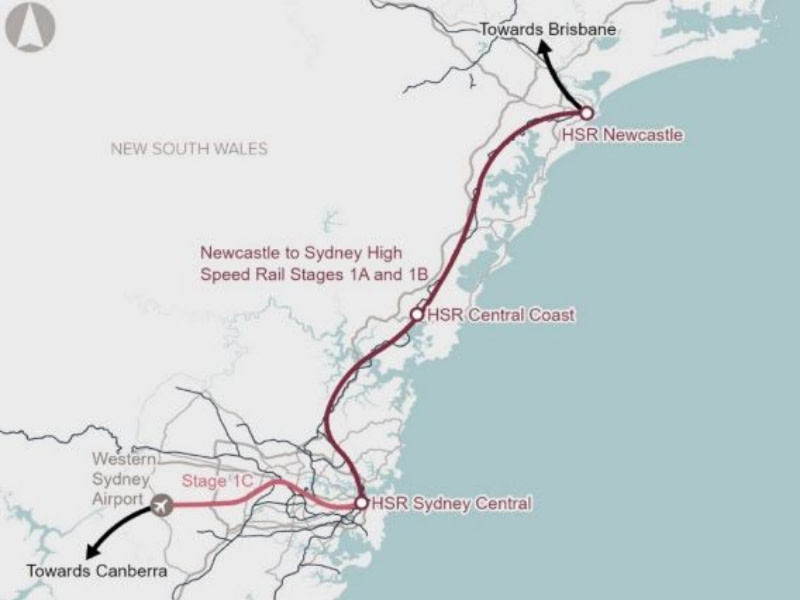East Coast Bullet Train Plan Stoked as Europe Steams On

The decades-long quest for high-speed rail on the east coast took another incremental step forward with Infrastructure Australia releasing a report supporting the business case for a Newcastle-Sydney line.
With projected opening dates of 2037 for the Newcastle-Central Coast segment, 2039 to Central, and 2042 to the Western Sydney International Airport, the proposed line would eventually extend to Brisbane, Melbourne and Canberra.
The six stations at Newcastle, Lake Macquarie, Central Coast, Sydney Central, Parramatta and Western Sydney International Airport would require 194km of tracks, including 115km in new tunnels and 38km on bridges and viaducts.
Construction would begin in 2027, with tracks and infrastructure separate from existing metro and freight lines.
The current rail journey from Newcastle to Sydney takes 2 hours and 40 minutes, or 30 minutes slower than road transport, and is the most unreliable line in the country—more than 21 per cent of trains miss punctuality targets.
The Infrastructure Australia analysis supports a business case put forward by the High Speed Rail Authority, despite noting that it is “currently not possible to make a confident assessment of the proposal’s benefit-cost ratio (BCR)” given the early stage of design work.
A further $667 million is sought by HSRA to continue development, along with the $70-odd million already committed by the Federal Government.

The BCR in the business case ranges from 0.1 to 1.05, depending on the capital costs and housing supply benefits realised by the project. The upper bound suggested by HSRA would produce net present value between -$10.5 billion to $2.6 billion.
However, the report claims “low confidence” that the housing benefits forecast by HSRA will be realised, which include 46,000 additional households due to land-use change (58 per cent of the total monetised benefit of the line). Up to 104,000 additional households are also projected as a result of demographic shifts towards smaller household sizes, but Infrastructure Australia found insufficient evidence to support that claim.
The diameter of tunnels, and therefore maximum speed allowed, were questioned by Infrastructure Australia, with speeds limited to 200km/h for much of the line, and reaching full speed of 320km/h only outside of tunnels. The report also questioned the costing of only the residual emissions of 1.3Mt CO2-e, instead of the full construction emissions of 3.7Mt CO2-e.
However, Infrastructure Australia accepted the claim of 99,000 new jobs within the rail corridor, as well as social wellbeing outcomes worth up to $10.1 billion, and business productivity gains up to $3.7 billion.

Meanwhile, also this month, the European Commission released a 2040 roadmap for improvements to its high-speed rail network.
The new plan calls for reducing travel times between Berlin and Copenhagen to 4 hours by 2030, instead of the 7 hours currently required. New connections will also link the Baltic countries.
By 2035, travel times between Athens and Sofia will be 6 hours, or less than half of today’s 13 hours and 40 minutes. New lines will join Lisbon to Paris via Madrid.
The EU has allocated more than €100 billion to rail infrastructure since 2014, and the current high-speed network extends to Stockholm, Bucharest, Athens, Rome, Paris and Amsterdam, as well as cities in the interior of the continent.














